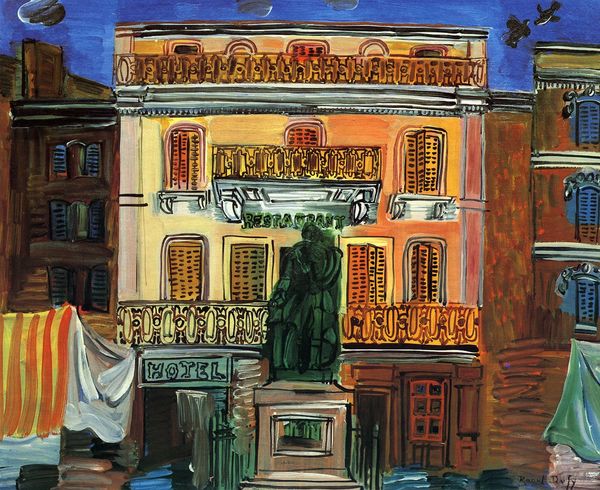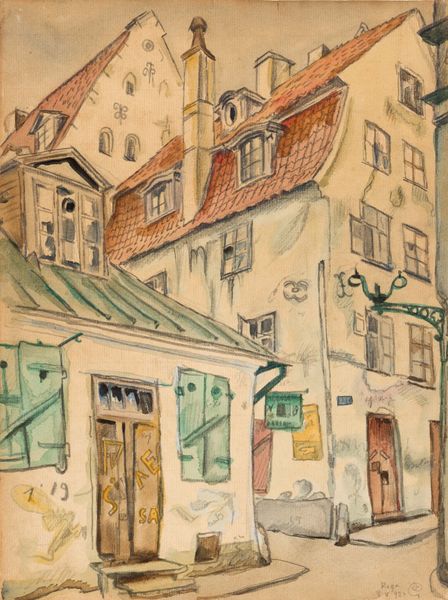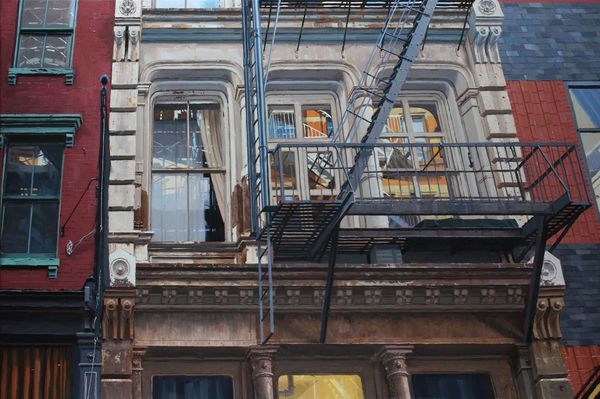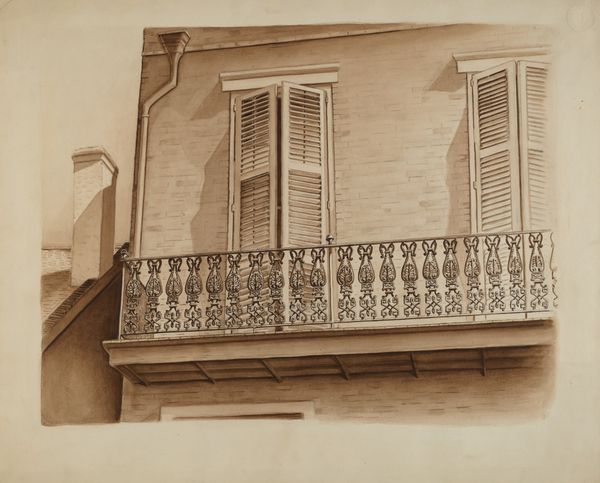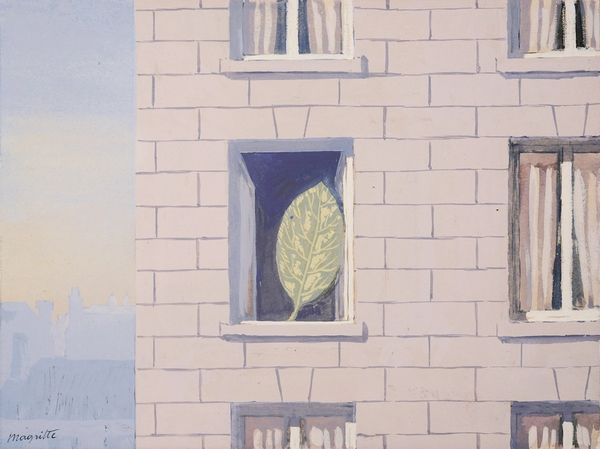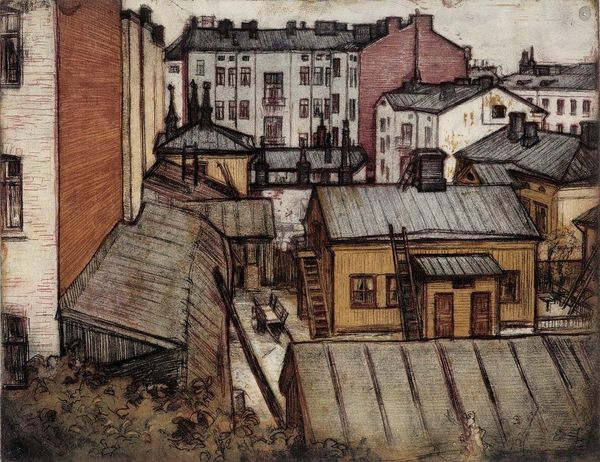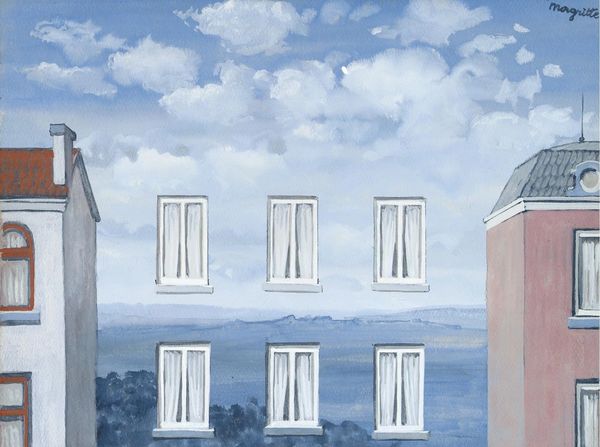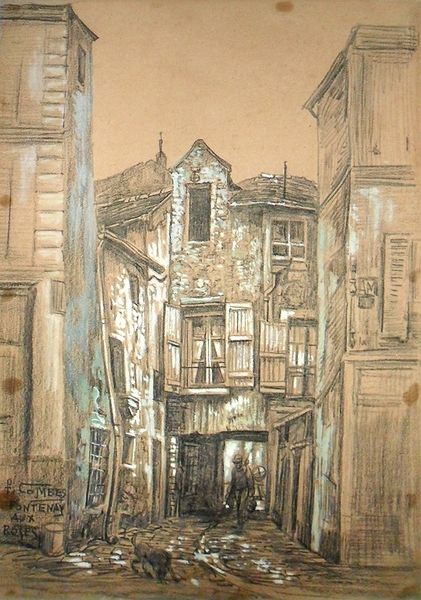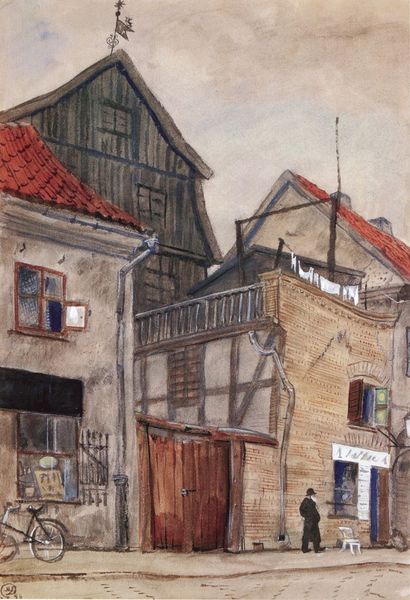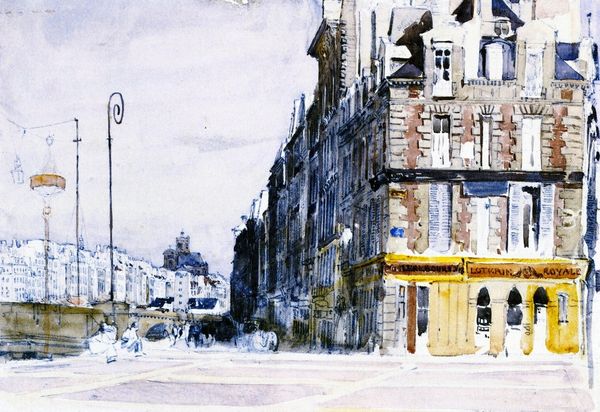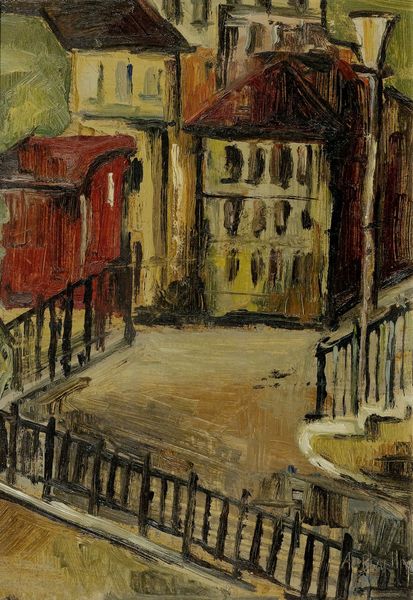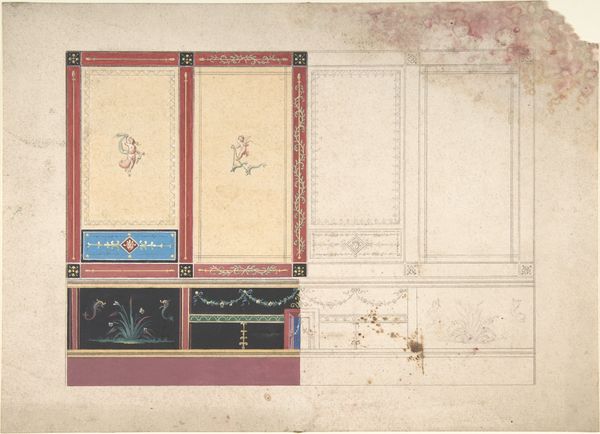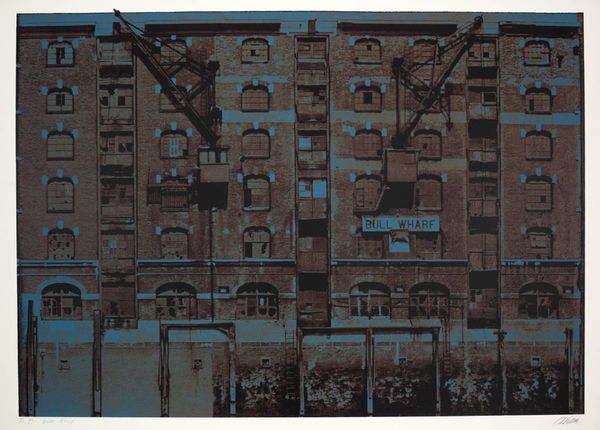
Copyright: Public Domain: Artvee
Editor: Here we have Léon Spilliaert's "House in the Peter Benoitstraat, Ostend," painted in 1929 with oil paint. I find it somewhat unsettling; the façade seems strangely flat and devoid of life, despite the almost hyper-realistic rendering. What do you see in this piece? Curator: I see a deliberate flattening of reality, not merely an artistic quirk. Note the repeating geometric forms - the rectangles and circles echoed in the architecture and window details. These shapes resonate with a kind of coded language common to interwar period art, a visual shorthand for the ordered, if increasingly unstable, society. Editor: Coded language? Curator: Yes. The building itself becomes a symbol. It's solid, imposing. However, the details like the curtains and even the roses hint at something else. Are they welcoming or masking an absence? Think about the psychological landscape of Europe in 1929. The echoes of World War I were still fresh, and anxieties about the future were brewing. Spilliaert’s choice of subject becomes a study of the façade versus what lies beneath. Do you feel a tension? Editor: I do, now that you point it out. It feels like there’s something hidden or repressed behind the formal presentation. The lamp, especially. Curator: Exactly! The lamp could represent the lingering weight of the past or a promise of illumination yet to come. This duality—the visible and invisible—becomes central to Spilliaert's imagery, I believe. Editor: That makes so much more sense now. It's not just a building; it's a visual representation of a complex state of mind, of cultural memory. Thanks. Curator: And a reminder that even in the most seemingly realistic representation, symbols can hold immense power.
Comments
No comments
Be the first to comment and join the conversation on the ultimate creative platform.
